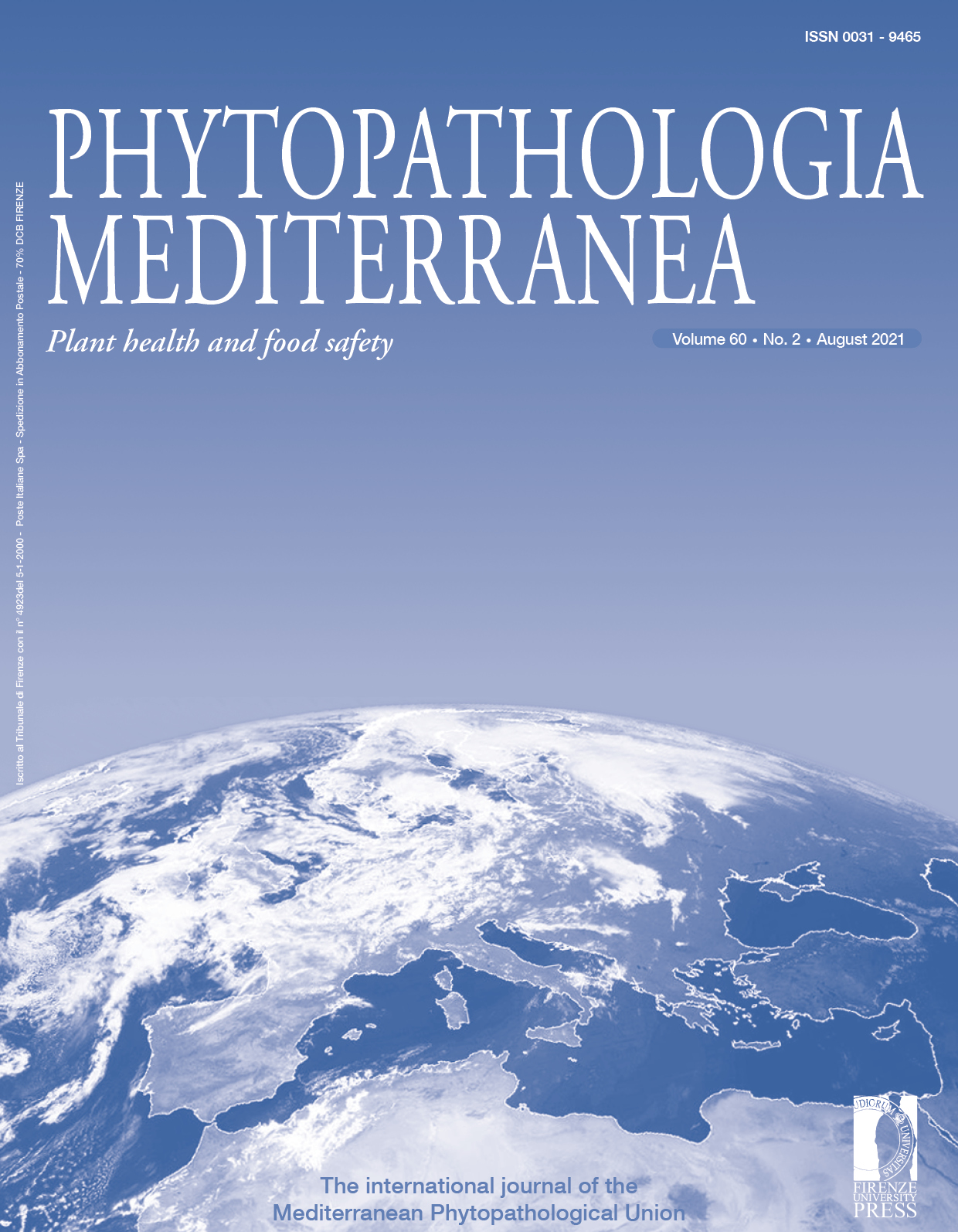Published 2021-09-13
Keywords
- Fire blight,
- AJ75/AJ76 and AMSbL/AMSbR primers,
- recA gene
How to Cite
Funding data
-
Regione Toscana
Grant numbers AOOGRT0365836-02/10/2019
Abstract
2-years-old plants of Pyrus communis showing symptoms of fire blight disease were sampled in an orchard in Tuscany (Italy) during Autumn 2020. Plants were obtained the previous spring from a commercial nursery located in a region where the disease is present since 1994. The collected material was processed in the lab in order to verify the presence of the bacterium Erwinia amylovora, the causal agent of fire blight. Pure isolates showing white mucoid colonies and levan producers on Levan medium were putatively assimilated to E. amylovora. DNA was extracted from the cultures and analysed with three molecular assays, including duplex PCR of the 29-Kb plasmid pEA29 and the ams chromosomal region, sequencing of the 16S rDNA and recA gene regions, two real-time PCR assays on symptomatic plant tissues. All tests confirmed the presence of E. amylovora. Symptomatic and surrounding plants were removed and immediately destroyed according to the regional phytosanitary protocol. This outcome poses a serious threat for fruit orchards in the area.







